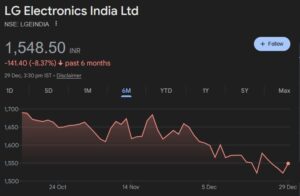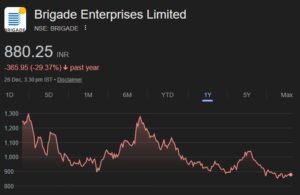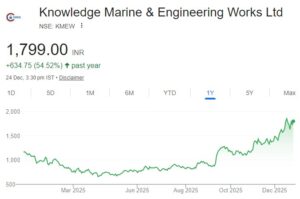
Ashish Kacholia follows the unique investment practice of “averaging upwards”. He first buys a small quantity of the stock and as the investment thesis unfolds and the gains start rolling in, his confidence in the stock grows and he buys more and more of the stock.
This practice is in sharp contrast to the method adopted by novice investors. When the novice investor buys a stock, and the price moves up rapidly, the novice is reluctant to buy more of the stock at the higher price. Instead, the novice waits with a prayer on his lips for the price to crumple down to his initial buying price so that he can add more. Needless to say, this seldom happens and the novice is left ruing the missed opportunity.
Ashish Kacholia first bought 1,13,592 shares of Pokarna on 18.11.2014 at Rs. 526 per share. Thereafter, he has been steadily adding the stock to his portfolio.
By 31st December 2014, he had amassed 2,86,314 shares. By 31st March 2015, the holding had swelled to 3,03,315 shares. On 30th June 2015, the holding stands at 3,48,315 shares.
This is a textbook example of “averaging upwards”. Even though the price of Pokarna has been steadily rising and has more than doubled since Ashish Kacholia’s first purchase at Rs. 526 (the CMP is Rs. 1222), he has/had no qualms in adding more.
Interestingly, some other major investors of Pokarna have taken the opposite path.
Sanjiv Shah had 87,288 shares as of 01.04.2014. He increased this to 1,51,799 shares as of 31.03.2015. However, he has pared his holding to 62,982 shares as of 30th June 2015. Premier Investment Fund Limited and Globe Capital Market Ltd have also followed the same path and slightly pared their holdings.
Ashish Kacholia is now the largest shareholder of Pokarna Ltd with 3,48,315 shares as of 30.06.2015, equivalent to 5.62% of the total capital. The holding is worth Rs. 42.56 crore at the CMP of Rs. 1,222.
The reason for Ashish Kacholia’s aggressive optimism with Pokarna is easy to understand.
Pokarna reported blockbuster Q1FY16 results. The revenue was up nearly 55% from Rs. 62 crore to Rs. 96 crore while the EBITDA was up a whopping 130% from Rs. 13 crore to Rs. 30 crore. There was a profit of Rs. 11.79 crore as opposed to a loss in the previous year’s corresponding quarter.
| Pokarna Ltd Quarterly Results | |||
| Particulars (Rs cr) | Jun 2015 | Jun 2014 | %Chg |
| Net Sales | 96.35 | 61.78 | 55.96 |
| Other Income | 0.9 | 1 | -10 |
| Total Income | 97.25 | 62.78 | 54.91 |
| Total Expenses | 67.55 | 49.33 | 36.93 |
| Operating Profit | 29.7 | 13.45 | 120.82 |
| Net Profit | 11.79 | -0.99 | 1290.91 |
| Equity Capital | 6.2 | 6.2 | – |
This is on the back of a similar scorching performance put up in the earlier quarters.
Now, the all-important question is whether this scorching performance is sustainable and whether we can still board the gravy train.
The answer lies in the latest “investors’ presentation” (pdf) furnished by the Company. The presentation sets out the entire business model and industry overview and explains what will be the “demand drivers” for the future. It is pointed out that the revival in the US housing market as well as the fast growing real estate market in India mean that the products produced by Pokarna will find more easy acceptance.
We also get a cue of Pokarna’s prospects from the interview of CMD Gautam Chand Jain.
Gautam Chand Jain was oozing confidence as to the prospects for FY 16. He said that the revenue and margins would “definitely be much better than the last year because of improved efficiencies and more market penetration”. “We are looking at much better numbers this year” he said.
Gautam Chand Jain also hinted that the revenue run rate of nearly Rs 100 crore on the top line and margins of around 30 percent are not only sustainable but could be improved. He stated that the revenue and margins “will improve because this quarter we literally had little shutdown for up-gradation of the production facility and in spite of that we have this number, so I hope that we should do better than what we did this quarter”.
Despite the humongous gains, Pokarna is still a micro-cap with a market capitalisation of only Rs. 750 crore and so it does look like Ashish Kacholia will have to brace himself for more mega gains from his favourite stock in the months and years to come.






what will happen when he starts selling?